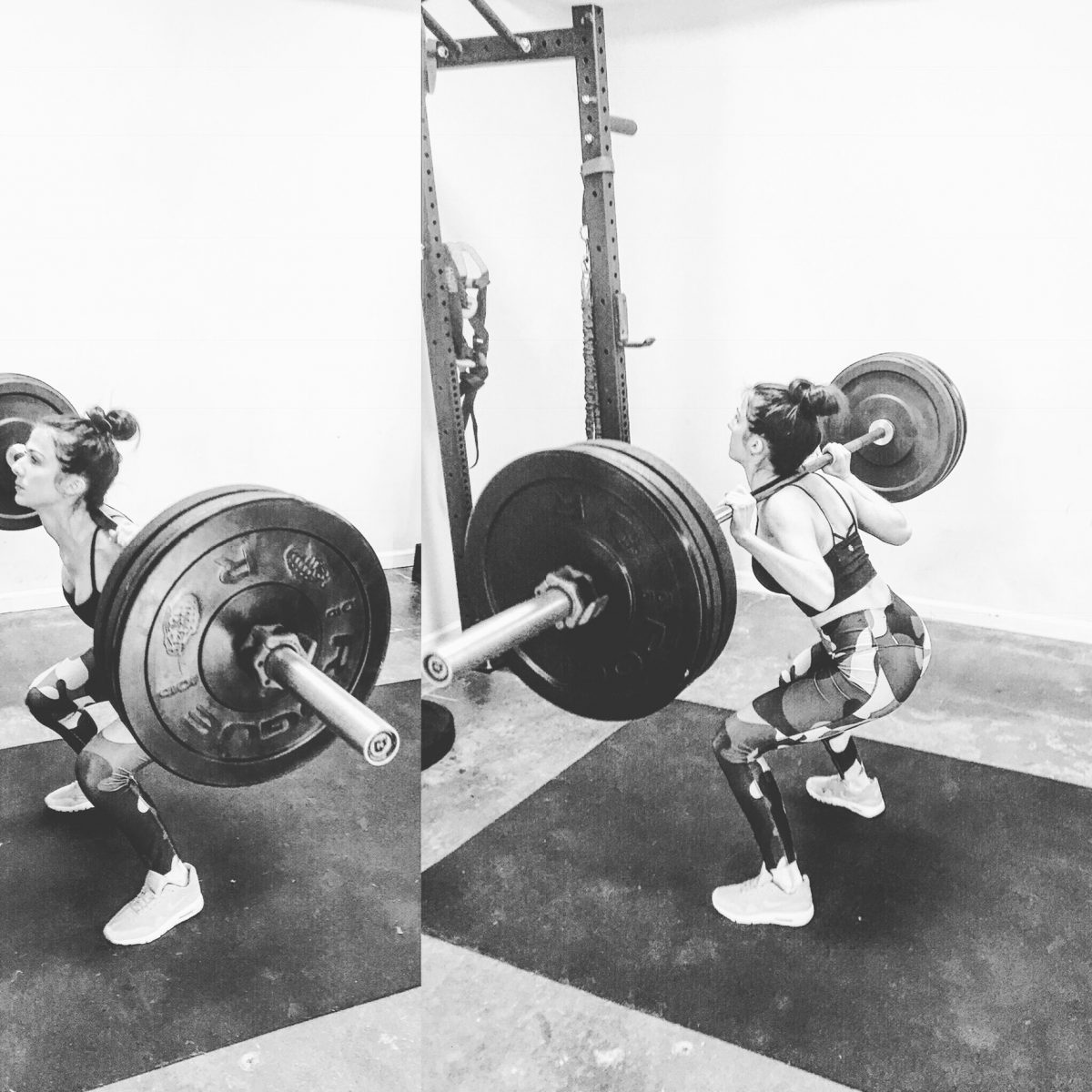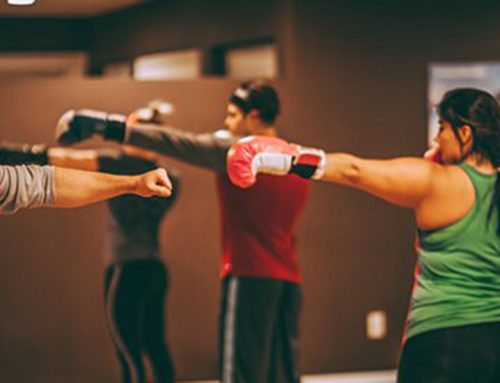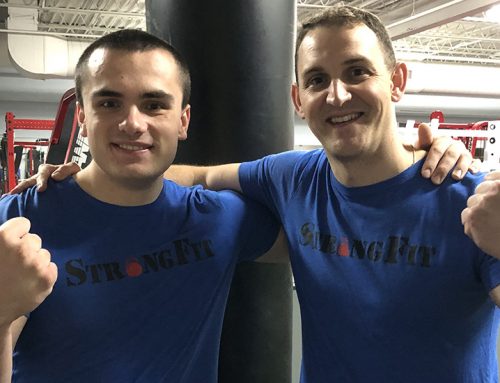The Squat
Before we get into the debate about the front squat or back squat with a barbell, let’s begin this blog by stating that the squat itself is a pivotal movement for improved strength, muscle hypertrophy, and power development. Its hands down one of the best exercises you can perform on a regular basis. In fact, you do it multiple times a day in your daily life, so its no wonder Personal Trainers, Fitness Coaches, and Physical Therapists utilize this movement for their clients, athletes, and patients alike. Let’s get a basic understanding of the squat anatomy and mechanics. It is common knowledge that the squat works the muscles of our legs, so let’s start with those muscles and their actions.
1) Quadriceps: This group of 4 muscles are located in the front part of your thigh. These babies are responsible for your acceleration/explosive phase, that part when you are driving back up from the endpoint of the squat. On the ascent, they perform a concentric contraction, extending your knee joint. They are also important isometric stabilizers for our knees.
2) Hamstrings: This group of 3 muscles are located in the back part of your thigh. Their role is to “apply the brakes” on our descent of the squat or in more scientific terms, eccentrically decelerate. They have active roles in not just the knee but the hip and pelvis as well. They help keep our trunk more upright by pulling on the pelvis during hip extension. Another way of putting this is that the hamstrings will contract to straighten out our pelvis which then erects the torso
3) Adductors: This group of five muscles make up our inner thighs. They have have a secondary role in the traditional squat, BUT kick on significantly when we change the width distance of our legs and position of our feet. Their role is to produce hip flexion, adduction (movement inwards), and internal rotation (rotation towards the body) of the hip and also serve to stabilize the hip and pelvis in general.
4) Gastrocnemius and Soleus: These muscles are located on the back of the lower leg. While we typically think of the bigger upper leg muscles during a squat, these smaller guys actually play an important role. As we descend on our squat, our knees will have a tendency to track forward. While some movement forward isn’t usually a cause for concern, too much movement forward can place an exorbitant amount of stress on the knee joint. The gastrocnemius and soleus will prevent excessive movement forward of your knees by pulling the tibia bone backwards as it concentrically contracts which takes place on the descent.
Now let’s quickly look at a few other important muscles related to the squat and their roles and we’ll move on!
5) Gluteals: These three muscles are the butt muscles, aka “the glutes”. While all three work to stabilize the hip and pelvis isometrically, the gluteus maximus is the main glute muscle targeted in the squat as it will produce the most force in the movement. It is the primary glute muscle that serves to “apply the brakes” on the descent of the squat while also working hard to extend and externally rotate the hips on the ascent. The hamstrings we discussed earlier are the “helpers” or in scientific terms, the synergists when it comes to “applying the brakes” and the quadriceps together with the gluteus maximus produce a concentric contraction to ascend from the bottom of the squat. You can appreciate how important this specific muscle is! Another quick fact, the gluteus maximus is the largest muscle in our body!
6) Erector Spinae: These are a group of very important spine muscles. The three sections of the erector spinea are the iliocostalis, longissimus, and spinalis each with three subdivisions. This group is unique in the sense of having an integrated function of dynamically stabilizing the spine. In other words, these group of muscles stabilize the spine during movement, not just while we sit or stand. They help control spinal flexion (bending forward), rotation, and lateral bending while facilitating spinal extension (straightening of the spine).
7) Transverse Abdominis: This abdominal muscle is important for the “block” we must create during the squat to protect our spine. When we contract or “flex” our abs, we create what’s called intra-abdominal pressure which helps prevent our spine from collapsing.
Now that we have an understanding of the anatomy and mechanics of the squat, let’s discuss the front squat and back squat and which one you should perform.
Back Squat
The back squat is one of the “big three” power lifts and has been a staple movement for avid weightlifters and power lifters. While we think of this movement as more of a lift for powerlifters, it’s an excellent exercise for bodybuilders. This should make sense since we know the squat works many muscles at the same time and targets two of our biggest muscle groups, the gluteals and quadriceps. The back squat does not come without risk. Improper loads and poor movement quality can put too much stress on the joints, namely the back and knees. This is why our Personal Trainers send every person through our systematic process known as the StrongFit Method.
In our second part the StrongFit Method, we access our client’s natural posture and body mechanics to get an objective understanding of what their movement needs are. Poor body awareness, weakness, mobility restrictions, and muscular imbalances can all lead to injuries such as muscle sprain and strains, disc herniation, and tendon ruptures in an advanced movement like a back squat. Another element we take in consideration is a person’s geometry when we look at a movement like the back squat. Why? Because person’s unique physical structure can either help them or make certain movements more difficult. In the case of a squat, bone length can change the game. Longer bones mean longer levers. Longer levers can increase the moment/force arm. Not an issue if the torso is also as long, BUT can be problematic if the torso is short relative to the other structures. We won’t go too far in to depth on the biomechanics, but in the case of a squat this can present a problem, especially combined with weak trunk stabilizers.
When an individual has a long femur bone and short torso, this creates a longer cantilever on the descent. This increases spine angle, which can bring about excessive force on the lumbar discs. If the trunk stabilizers are weak or the load is too great, our cantilever (spine) will create a deflection (a rounded bend). This is where discomfort and injury can occur. And this is why it is important to work with a qualified movement professional such as a Certified Personal Trainer should be considered when starting an advanced lift like the back squat.
Front Squat
The front squat is a variation of the squat that has caught fire within the last 20 years among the mainstream. I would argue the explosion of Crossfit helped bring this wonderful lift to the every day fitness goer. And personally, I’m glad it has become a staple movement for many. As far as the movement, all principles and concerns discussed with the back squat apply to the front squat, with minors changes to the physics as it relates to motion.
Let’s quickly dive into some more biomechanics for this variation. The change occurs due to the placement of the barbell. Instead of the barbell placed on the back, the barbell is placed on the front of the shoulders above the chest. This changes the center of mass and which changes our center of gravity. As we descend into the squat, we are forced to maintain a more upright posture with our trunk to maintain our balance/center of gravity to counter the resistance that is pulling us forward. As we maintain a more upright posture, we increase the moment arm of the knee joint and decrease the moment arm of the hip joint. Conversely, if we allow our knees to naturally move forward (not excessively) on the descent of the squat, the angle of our torso is maintained in an upright position, helping us prevent our potential cantilever issue we discussed earlier. As our knees move forward to the toes, we are slightly increasing our knee’s moment arm. If we increase the knee’s moment arm while maintaining a vertical path of our resistance, this should theoretically decrease the stress on our knees via less compressive forces to the knee joint.
Let’s look at the difference of the squats with a study reference in the next section.
The Difference Between The Front Squat and Back Squat
We already acknowledged the difference of the placement of the barbell in the front squat and the back squat. Is one optimal over the other? It all depends on the needs and ability of the person. From a muscle activation and recruitment standpoint, they are no different. In a study by Gullet et al, “A biomechanical comparison of back and front squats in healthy trained individuals”, EMG (sensors used to assess muscle activation and recruitment) showed no difference between the two. So if the goal is to increase strength, hypertrophy, or power both versions will suffice. However in this same study, it was found that the back squat produced a statistically significant increase in compressive forces and knee extension moment arm force with the back squat. Put simply, more pressure to the knees. While more studies are needed, it appears the front squat could be ideal for individuals who need to take precaution for their knees. Other factors in deciding which squat is optimal are functional and sport specific. An example would be an olympic weightlifter. The front squat is a catch point, mid point, and set up position for lifts performed in olympic weight lifting, just as the back squat is a specific lift for the sport of power lifting. In these cases we would certainly choose accordingly.
Another point to consider among which variation is mobility restrictions. Back squats can be challenging and uncomfortable for restriction in the external rotators of the shoulder joint. If the person can’t externally rotate the shoulders to help maintain a shelf on their back, they will have a hard to maintaining proper positioning. Mobility restrictions can make front squats uncomfortable and challenging as well. If one prefers or needs to use the full grip method (hands under the bar as it sits on your shoulders) then restrictions in the muscles that internally rotate and extend your shoulder can cause a great deal of discomfort in the wrists and shoulders. Additionally, individuals with a history of A/C joint problems may also experience pain and discomfort with front squats given the placement of the bar over this area.
If you are dealing with one or more restrictions, no matter your experience, then we highly recommend working with a Certified Personal Trainer who is seasoned in these lifts and has an in depth understanding of corrective exercise.
In summary, front squats and back squats are both good options for muscular strength, growth, and power. Back squats are the preferred lift if you are competing in power lifting or have an emphasis on power lifts within your lifting cycle. Front squats are be advantageous for the olympic lifter as it directly translates into the various olympic lifts. Front squats may also be recommended for long term protection of the knees as per the study we reviewed demonstrated back squats have a higher amount of compressive forces directed to the knee.
Finally, anyone dealing with mobility restrictions, lack experience with these lifts, or want to perfect these two lifts are highly recommended to work with a qualified movement professional. If you’re in Cincinnati, OH don’t hesitate to reach out to us for help with your squats, no matter which variation you need or want to work on. Click here to get started! We look forward to connecting with you! Happy Squatting!
Reference:
1. Gullett JC, Tillman MD, Gutierrez GM, Chow JW. A biomechanical comparison of back and front squats in healthy trained individuals. Journal of Strength and Conditioning Research. 2009 Jan;23(1):284-92.



